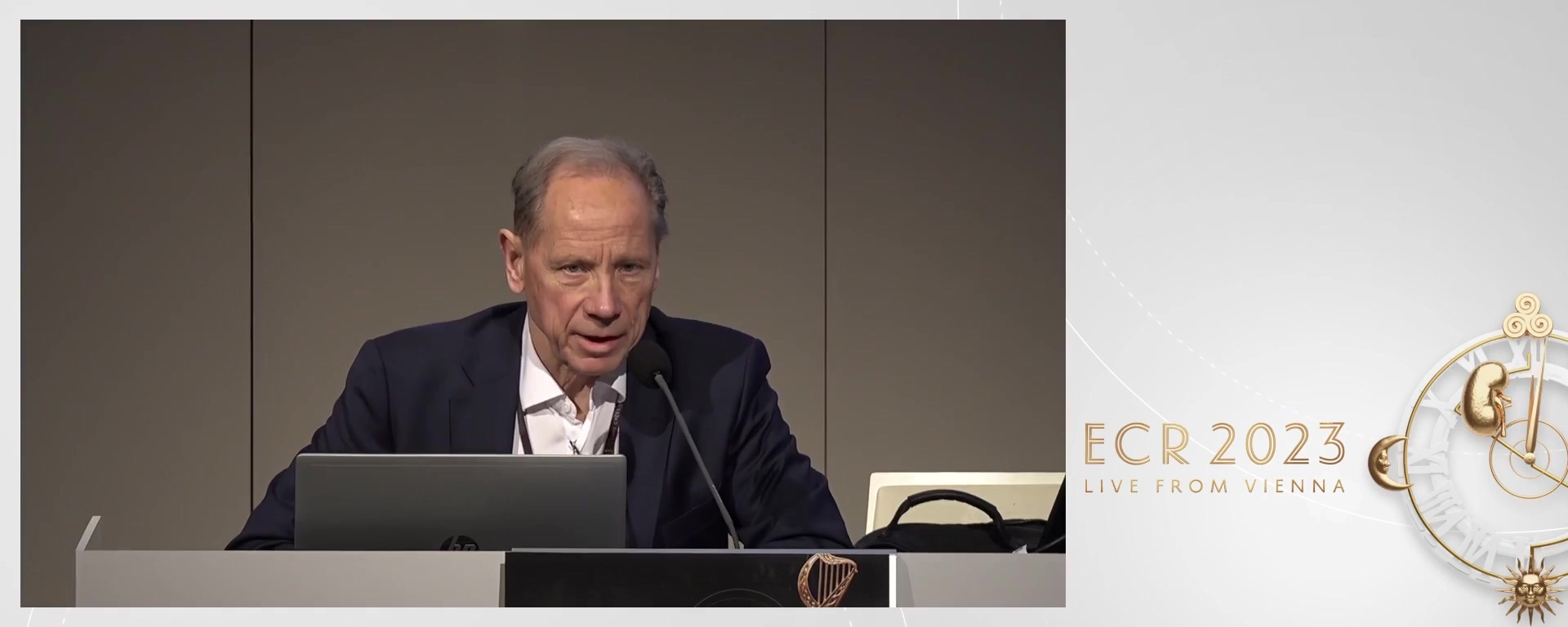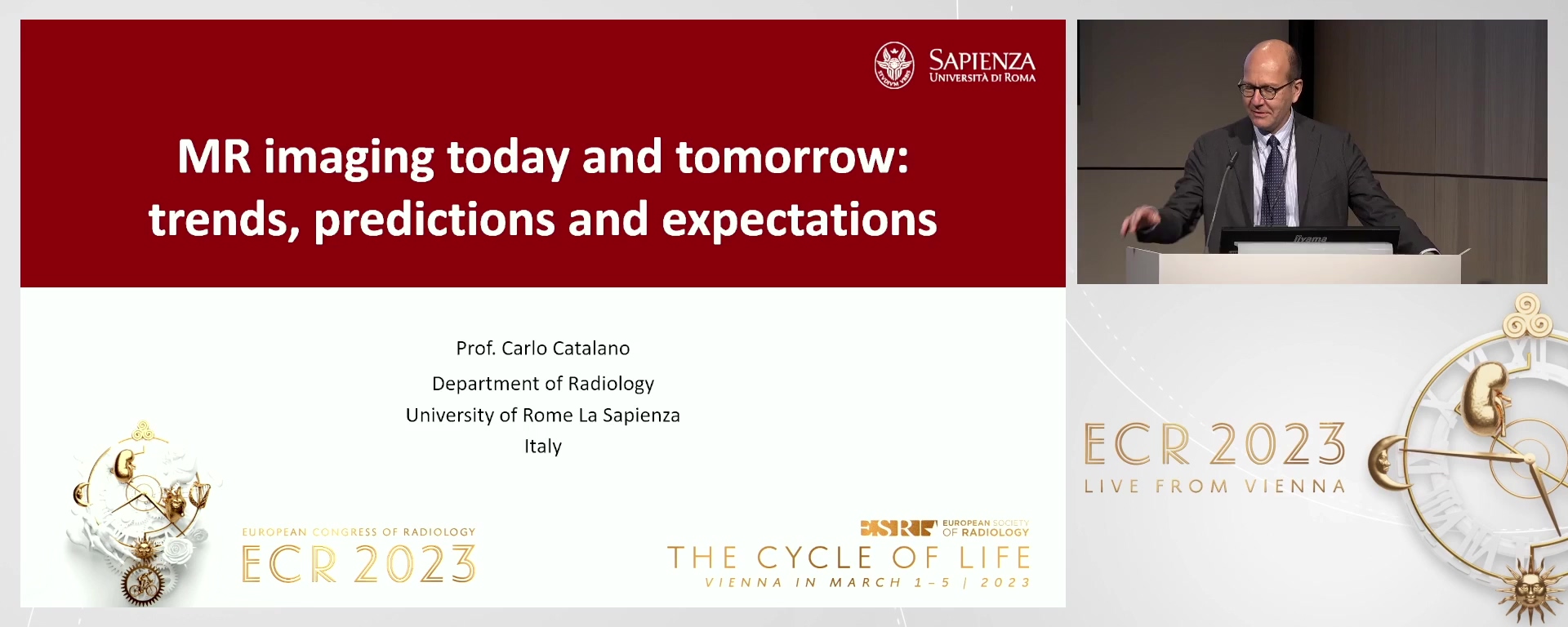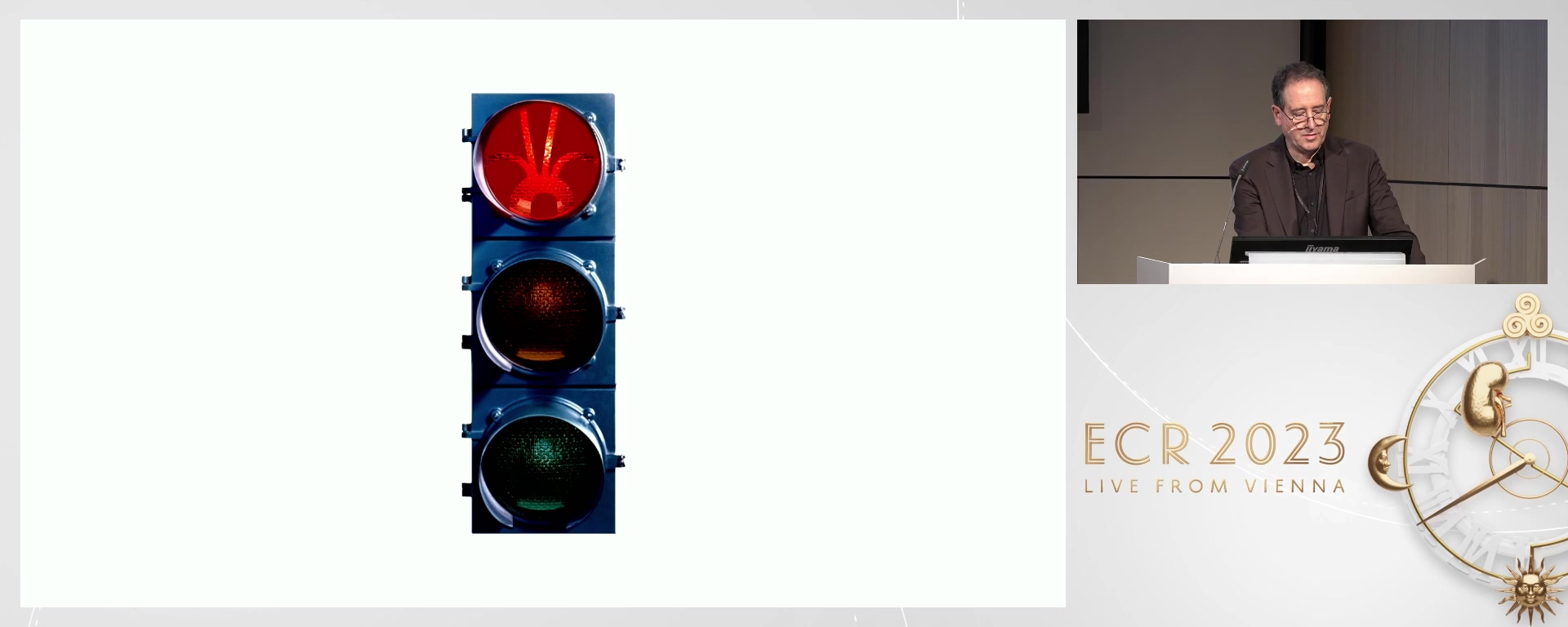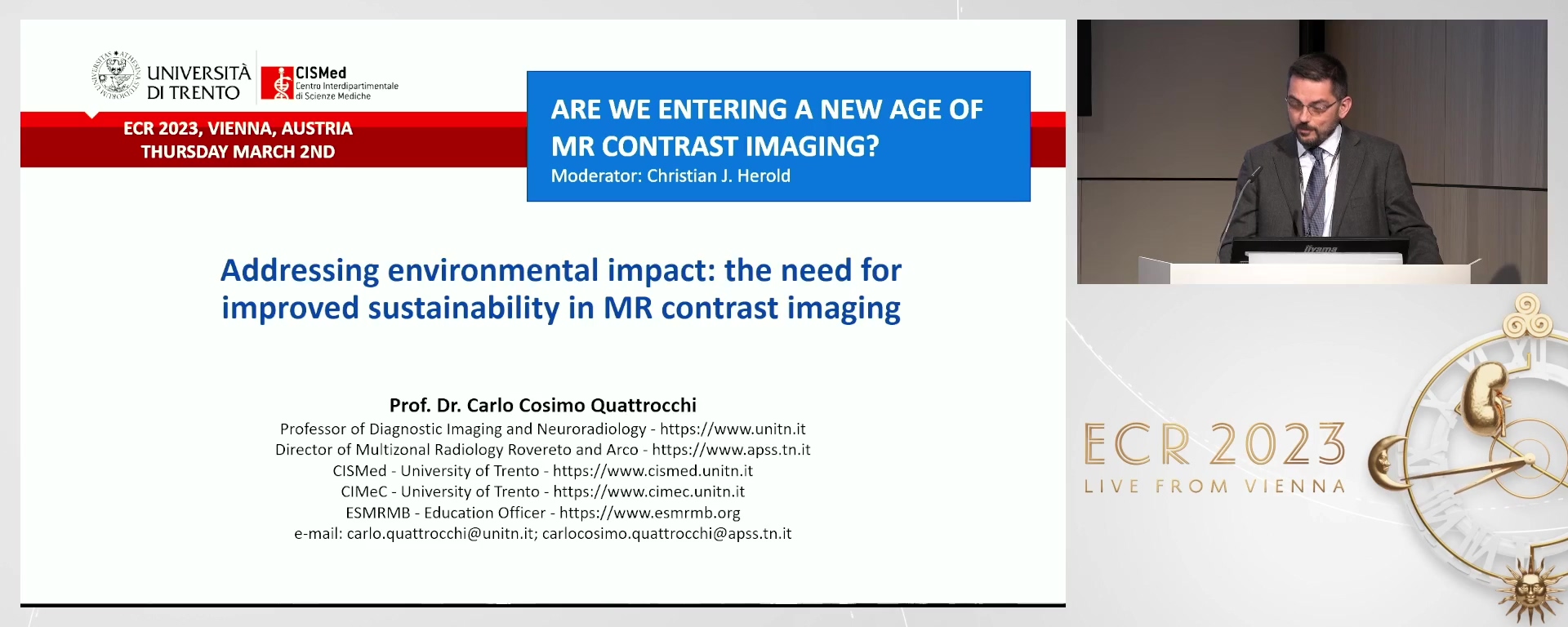Industry Symposium by Bracco
IND 13 - Are we entering a new age of MR contrast imaging?
However, concern in recent years over the impact of GBCA exposure has led to marked changes in the availability and usage of GBCAs.
Safety concerns focused on the possible long–term, albeit as yet undemonstrated, impact of gadolinium retention, have led to a re–assessment of the future role of contrast–enhanced MRI and to GBCA utilization in particular.
The potential impact of GBCAs in the environment is another area of increasing concern.
This symposium will address the current and future role of contrast–enhanced MRI in clinical practice, focusing on trends and expectations for contrast–enhanced MRI as a diagnostic imaging modality and the possible future impact of newer generation GBCAs both on clinical routine and as a means to improve the environmental impact of MR contrast imaging.
5 min
Introduction
Christian J. Johannes Herold, Vienna / Austria
15 min
MR imaging today and tomorrow: trends, predictions and expectations.
Carlo Catalano, Roma / Italy
Learning Objectives
To appreciate the direction in which contrast-enhanced MR imaging is headed, based on trends, predictions and expectations.
15 min
Will new gadolinium agents herald a new era in MR imaging?
Giles Hannibal Roditi, Glasgow / United Kingdom
Learning Objectives
To understand how newer GBCAs might impact MR contrast imaging.
15 min
Addressing environmental impact: the need for improved sustainability in MR contrast imaging.
Carlo Cosimo Quattrocchi, Roma / Italy
Learning Objectives
To highlight the need for improved sustainability in MR contrast imaging and how newer imaging practices might help.
10 min
Q&A




